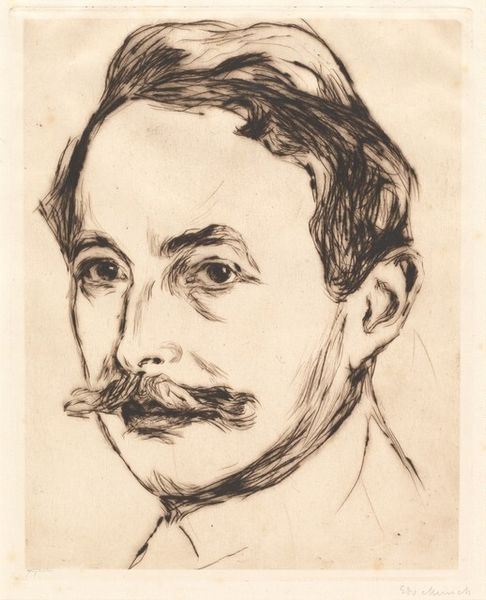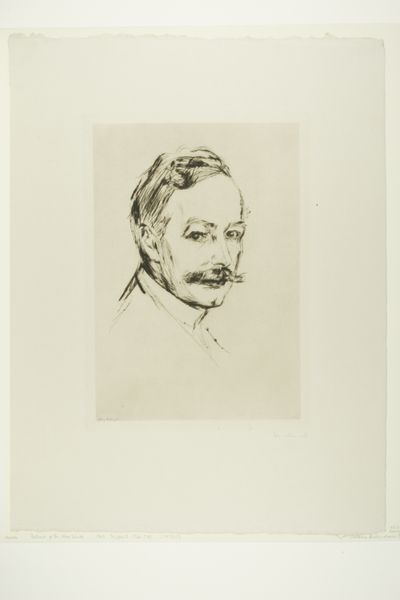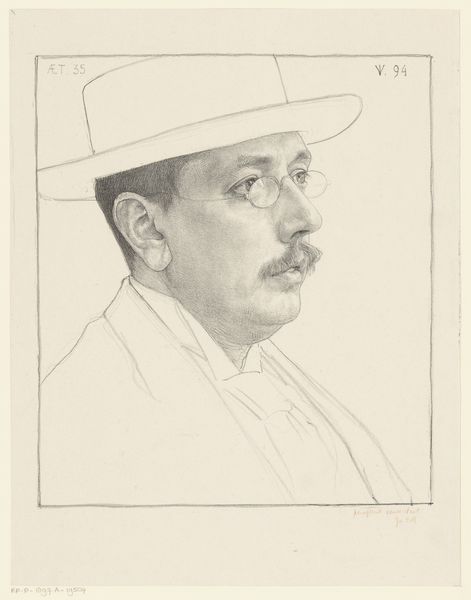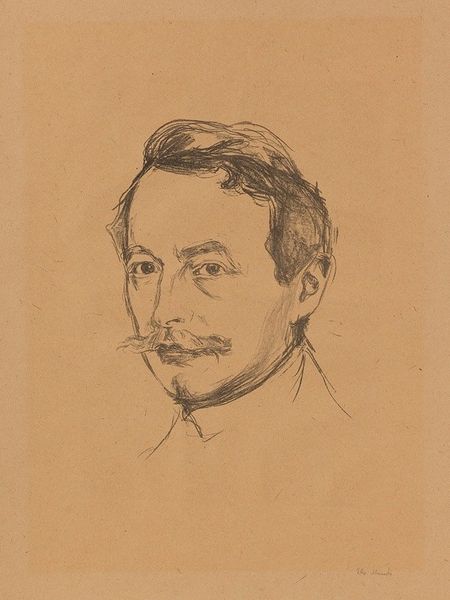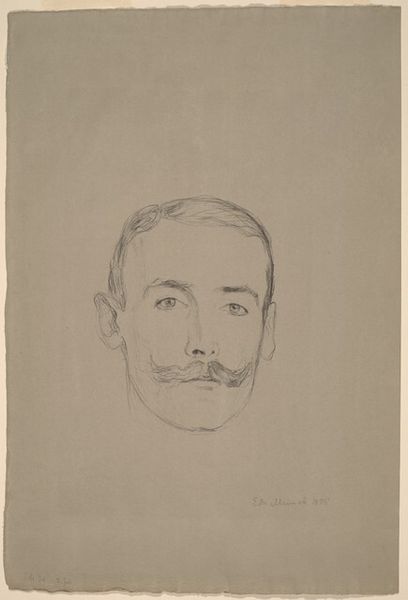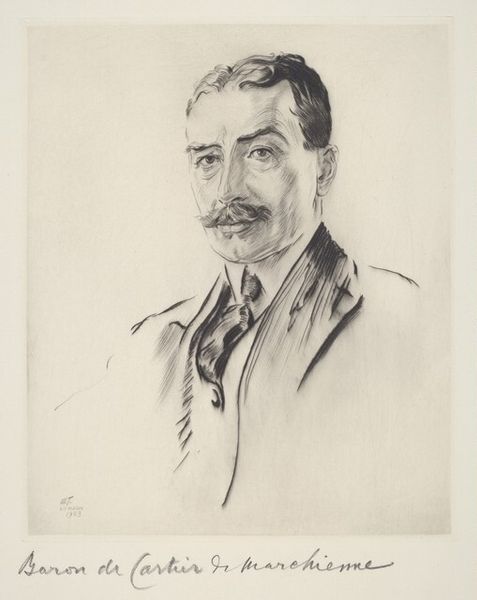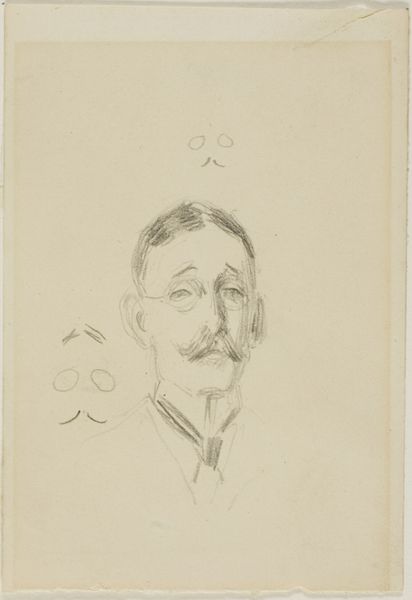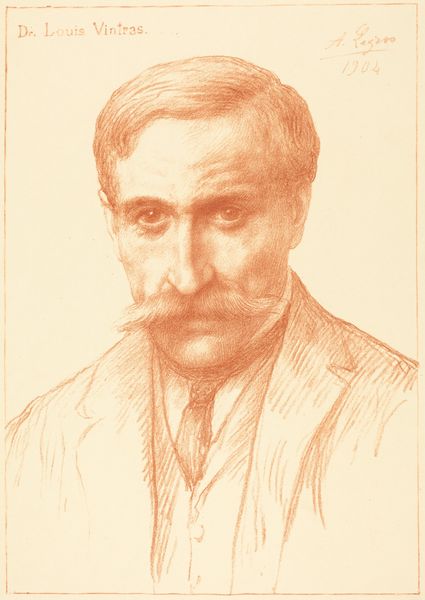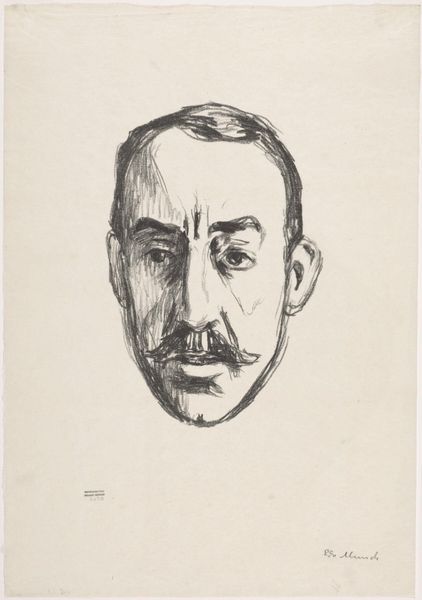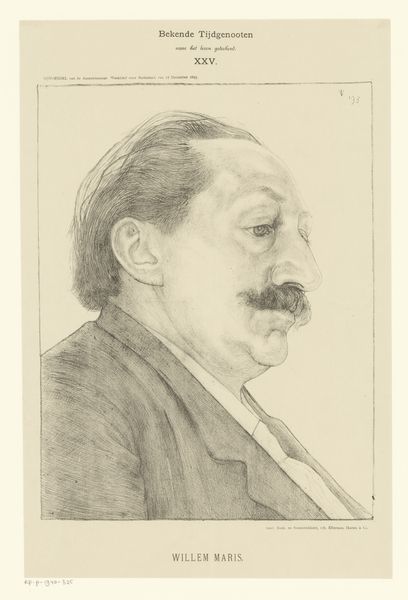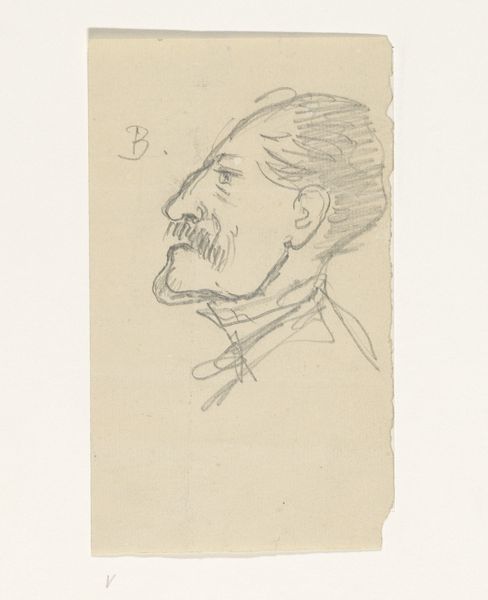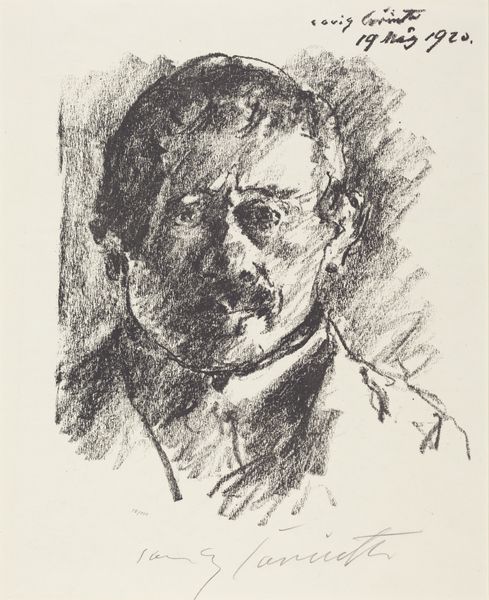
drawing, print, etching, paper
#
portrait
#
pencil drawn
#
drawing
#
art-nouveau
# print
#
etching
#
paper
#
pencil drawing
#
portrait drawing
Dimensions: 273 × 214 mm (image); 287 × 230 mm (plate); 440 × 330 mm (sheet)
Copyright: Public Domain
Curator: Look at this etching by Edvard Munch from 1902. It’s a portrait titled "Dr. Max Linde." What’s your immediate reaction? Editor: There’s an immediacy to the line work, isn't there? Almost feverish. And a softness too, it gives a vulnerable quality to Dr. Linde. The starkness created through the etching process contrasts sharply with the intimate expression of the man himself. Curator: It’s interesting that you say 'feverish'. Linde was an early and important patron of Munch. But there was a notable breakdown in their relationship later on. So this slightly unsettling energy might hint at tensions brewing even at the time. The material tells one story but its use in portraying a specific sitter introduces others. Editor: Absolutely. It also gives a snapshot into the turn-of-the-century bourgeoisie and their evolving relationship with the avant-garde. Linde wasn’t just any patron; he was key in popularizing Munch's art. The art world owes figures like him more attention for creating a socio-economic support system. Curator: And think about the means of production here. Etching allowed for multiples, and access. Yet each print would possess its unique characteristics. It bridges the gap between industrial reproduction and the aura of a handcrafted piece. Editor: A tension beautifully mirroring Linde's position between tradition and modernity, both within his own social sphere and in his taste for art. The success of this piece surely bolstered the argument that art has relevance beyond aesthetic consideration; its material realities hold a similar type of currency. Curator: True. Looking at it now, knowing all the forces in play behind its creation, I see so much more than just a portrait. I see relationships, cultural shifts and tensions inherent to art making itself. Editor: And I'm now much more attuned to its process than I was a few moments ago. Munch has that effect. It’s all there—social contexts, etching techniques, the man's vulnerable expression. Thank you for drawing it out!
Comments
No comments
Be the first to comment and join the conversation on the ultimate creative platform.
